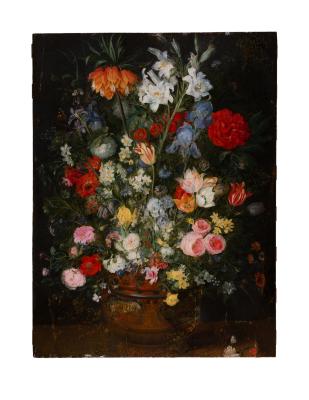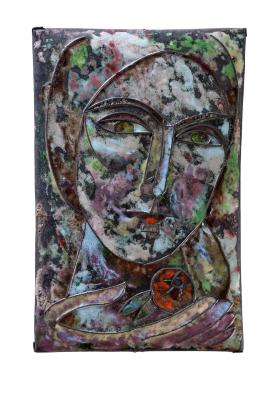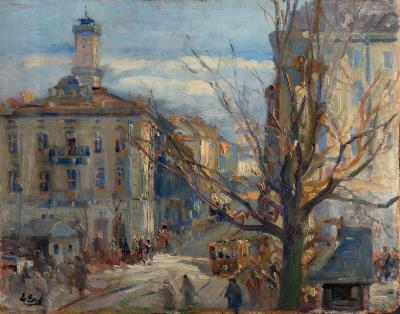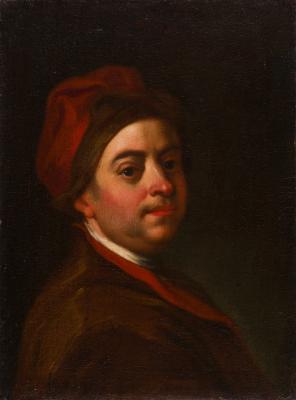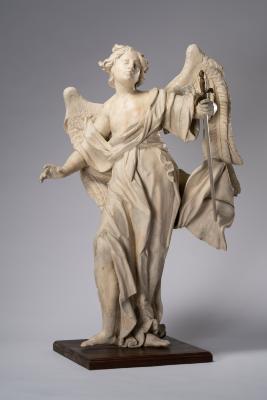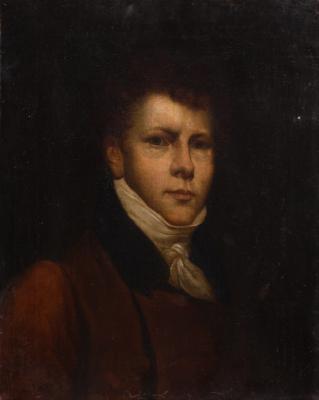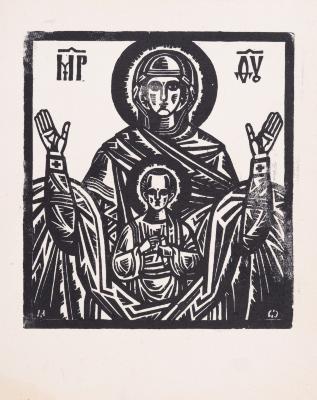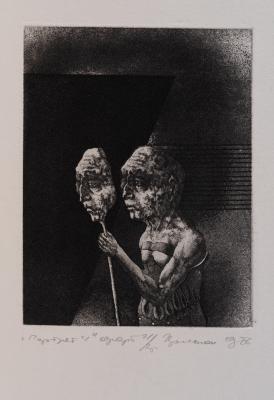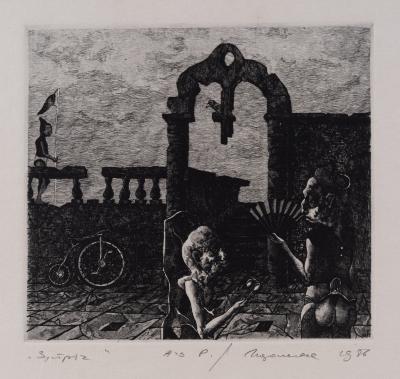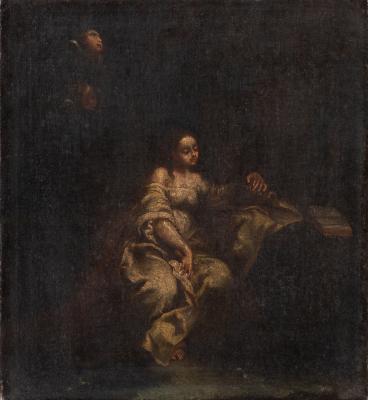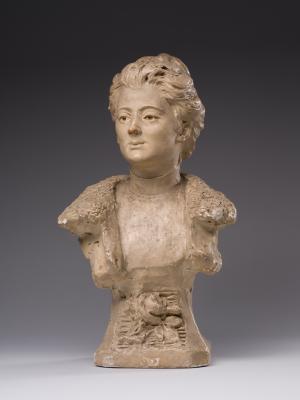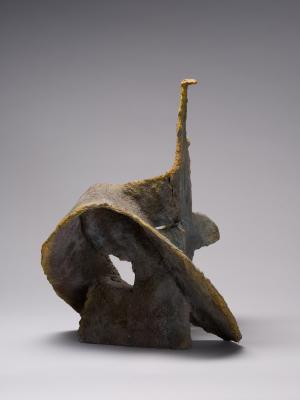This is a full face portrait of a young man. As a rule, significant and solemn characters are portrayed in this way; their lives are concentrated in the gaze directed at the viewer. The look of the portrayed man is open and gentle. There is something timeless in this portrait. The composition is made in two dimensions that have nothing to do with the material world; the combination of terracotta, blue, and yellow colors refers to traditional Proto-Renaissance images. Boichuk never aimed to show pure abstraction in his works; he stopped working on the painting at the generalization stage. According to the artist, the generalization should give the viewer a sense of truth immortalized in the painting. In 1973, this unique exhibit item got into the collection of Lviv National Art Gallery from the private collection of Yaroslava Muzyka, who closely worked with Boichuk and his followers during the Lviv period of the artist's life. Yaroslava Muzyka lived in a house on Charnetskyi Street (now Vynnychenko Street, 26), where Boichuk's studio was located; she managed to preserve a significant amount of archival material and some works that remained after the artist’s moving to Kyiv.





